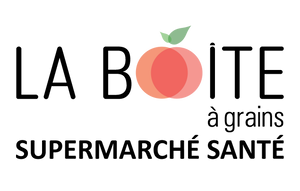Anyone who has never ventured into the world of lacto-fermentation might think that this form of food processing is laborious and intimidating. However, with a few simple basics, lacto-fermentation becomes accessible to everyone. With a minimum of knowledge and effort, you will have healthy and tasty lacto-fermented vegetables within a few days.
What is lacto-fermentation?
Lacto-fermentation is a fermentation process that encourages the development of beneficial bacteria (probiotics) in food (in this case, vegetables) in the presence of lactic acid, which ensures their preservation while improving their nutritional profile. Lacto-fermentation starts in brine (salt water). The vegetables, which naturally contain carbohydrates and beneficial bacteria, form lactic acid in this brine in the absence of oxygen. This is why this process is called lacto-fermentation. In the brine, the salt allows the maximum amount of liquid to be extracted from the vegetables while inhibiting the growth of pathogenic bacteria that can cause molds. In any fermentation process, it is important to use non-chlorinated water since chlorine would inhibit the growth of good bacteria.
Ingredients
- Apple cider vinegar (to clean containers)
- Various seasonal vegetables (carrots, field cucumbers, cabbage, asparagus, beans, Brussels sprouts, cauliflower, beets, etc.)
- Fresh spices and herbs of your choice (suggestions: fresh dill, green onions, fresh ginger, garlic cloves, fennel seeds, caraway seeds, coriander seeds, herbes de Provence)
- Non-chlorinated water*.
- Sea salt
Material
- Pestle
- Fermenting weights (commercial weights, homemade clay weights, bottom of a glass, cabbage core, apple slice). The weight is essential, it keeps the food under the water level which prevents the development of moulds.
- Glass jars and lids
*If you don't have non-chlorinated purified water, leave a basin of water aerated for a few hours to let the chlorine evaporate.

Approach
- Rinse the work surface and equipment (cutting board, kitchen knives, glass jars) with warm water and a spoonful of apple cider vinegar. This will remove all traces of detergent and ambient bacteria.
- Cut the vegetables into strips or slices. Divide the vegetables among the glass containers.
- Add spices and seasonings to vegetables.
- Add sea salt as follows:
- For a 1L jar: 1 tablespoon of sea salt
- For a 500 ml jar: ½ tablespoon of sea salt
- For a 250 ml jar: ¼ tablespoon of sea salt
- Finally, cover the vegetables with non-chlorinated water, keeping ¼ inch of clearance at the jar opening.
- Using a pestle, press the vegetables and seasonings into the bottom of each jar.
- Keep the vegetables and seasonings below the water level by placing a weight.
- Place the lids on the jars, making sure not to saddle them. Air must be able to escape from the jars.
- Store fermentation jars at room temperature away from direct light. Twice a day, check that the vegetables remain below the water level and press them with the pestle. After the first 24-48 hours, bubbles will form on the surface, indicating that the fermentation process is well underway.
- After 5-7 days, the bubbles will have stopped forming. Remove the weights, close the jars and transfer to the refrigerator.
- Lacto-fermented vegetables can be stored in the refrigerator for 6 months.
Happy fermenting!
The team of La Boite à Grains
_______________________
Recipe creation and photography :
Véronique Cousineau, certified naturopath


